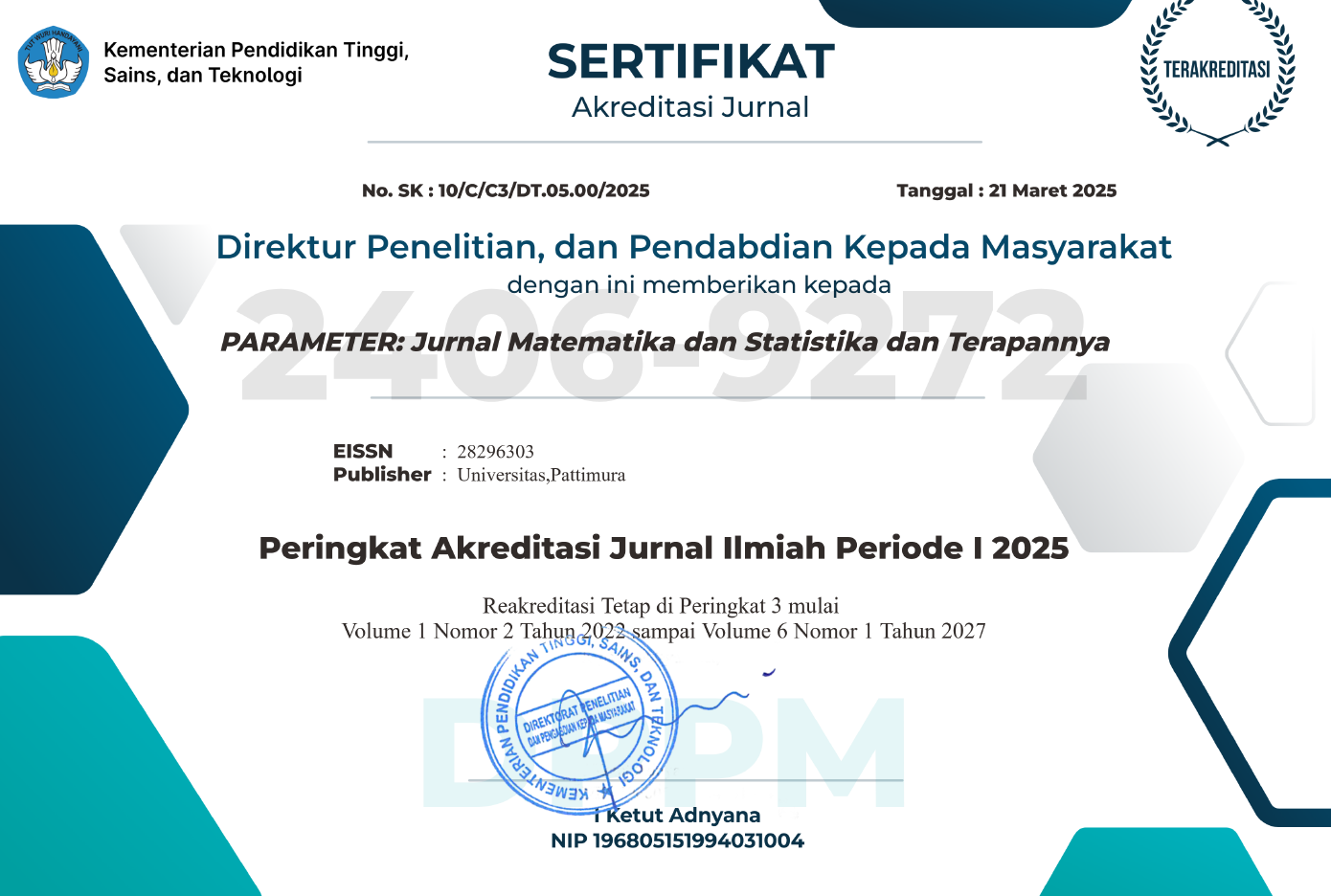Fractional Modeling of the Interaction Between Mycobacterium Tuberculosis and Its Response to Antibiotics
Abstract
Mycobacterium tuberculosis is a bacterium that causes tuberculosis, which is the second most common infectious disease in the world and generally attacks the lungs. It is important to formulate the dynamics of interactions and the effects of antibiotic administration on Mycobacterium tuberculosis into a mathematical model, especially using a fractional order approach. In this study, a model was developed using the Caputo-Fabrizio derivative. The purpose of the study was to study the dynamics of interactions between bacteria and antibiotics, where the administration of antibiotics causes the bacterial population to be divided into two types, namely sensitive bacteria and bacteria resistant to antibiotics. Based on the model built, four equilibrium points were obtained. Stability analysis shows that these equilibrium points are locally asymptotically stable under certain conditions. To support the results of the analysis, numerical simulations were carried out using the three-step Adams-Bashforth method with the Caputo-Fabrizio derivative. The simulation results showed that the smaller the value of the fractional order parameter , the faster the system reaches the equilibrium point. Although the value of affects the speed of convergence, it does not affect the stability of the equilibrium point.
Downloads
Copyright (c) 2025 Inayah Alifah Khairiah, Yudi Ari Adi

This work is licensed under a Creative Commons Attribution-ShareAlike 4.0 International License.




















